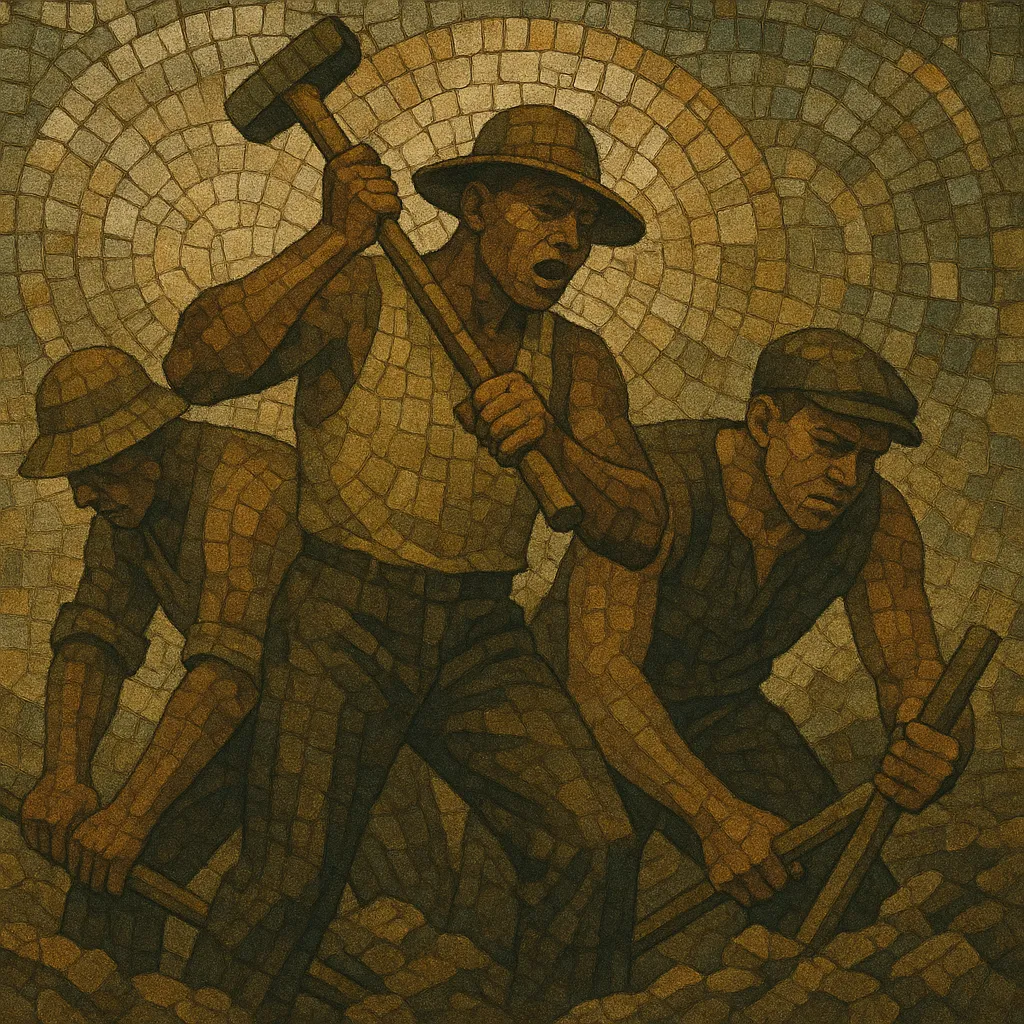
Work song is a functional vocal music tradition created to coordinate physical labor, set a steady pace, and build solidarity among workers. It typically features call-and-response structures, short improvised verses, and a strong, repetitive pulse aligned to the motions of the task (hammering, rowing, hauling, chopping).
While versions exist in many cultures, the most documented stream is the African American work song in the United States—heard in fields, on railroads and levees, in lumber camps, and on prison farms. Closely related practices include maritime shanties, fishing chanteys, and industrial worksongs, all of which use rhythm and group participation to ease strenuous or monotonous work.
Musically, work songs are commonly unaccompanied (a cappella) or use body percussion and tools as instruments. Lyrics often reference the job at hand, hardship and hope, local news, humor, or moral commentary, with leaders improvising lines answered by a chorus.
Work songs predate written history, but the canon most recognized in recorded music took shape in the 1800s United States. Enslaved Africans and their descendants adapted West and Central African responsorial singing, polyrhythms, and communal performance to the demands of plantation labor, railroad building, timber work, and later chain-gang prison labor. The call-and-response form, flexible verses, and leader–chorus structure helped synchronize effort and sustain morale.
By the late 1800s and early 1900s, observers and folklorists began noting distinct repertoires for different tasks—“gandy dancer” calls for track-lining, levee and stevedore songs for hauling, and hammer songs for rock-breaking. In parallel, Anglo-American maritime shanties and coastal fishing chanteys formed a seaborne branch of the work song, with different rhythmic formulas for halyards, capstans, or rowing.
From the 1930s onward, collectors such as John and Alan Lomax recorded prison farms (e.g., Parchman Farm, Mississippi) and work camps, capturing powerful examples by leaders like James “Iron Head” Baker, Mose “Clear Rock” Platt, and Henry Truvillion. These recordings revealed the improvisational poetics, intonation, and timing that tied the music to specific motions—swinging axes, tamping rails, or pulling nets.
As mechanization reduced communal manual labor, the functional necessity of work songs waned, but their musical DNA flowed into blues, spirituals, gospel, rhythm & blues, and ultimately rock & roll. Contemporary revivals by Sea Island ensembles, shanty choirs, and folk interpreters keep the repertoire alive as concert music and cultural heritage, while the aesthetics—call-and-response, groove linked to movement, communal chorus—continue to inspire modern genres.

